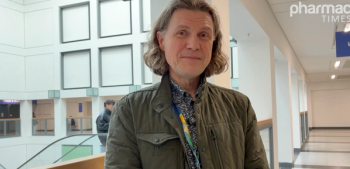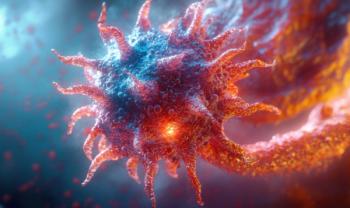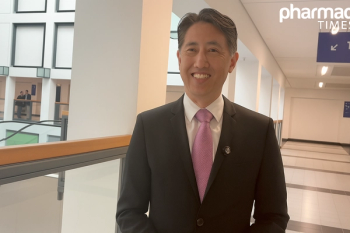
Understanding Second Primary Tumors in C-POST: Definitions, Incidence, and Clinical Implications of Cemiplimab
Danny Rischin, MD, reviews findings from the C-POST trial.
In an interview with Pharmacy Times, Danny Rischin, MD, outlines how second primary cutaneous squamous cell carcinomas (SPTs) were defined and assessed in the C-POST trial, highlighting distinctions from recurrences or metastases. He also reviews incidence patterns between the cemiplimab (Libtayo; Regeneron) and placebo arms and reflects on the clinical relevance of SPT burden, treatment timing, and surveillance needs in patients with high-risk cutaneous squamous cell carcinoma (CSCC).
Q: Could you clarify how second primary CSCC tumors (SPTs) were defined and distinguished from local recurrences or metastases in the C-POST protocol, and summarize the incidence of SPTs in the cemiplimab arm versus the placebo arm?
Danny Rischin, MD: So it's well known that in patients with non-melanoma skin cancer, they're at risk of developing new or multiple second primary tumors. In particular, we're interested here in second primary cutaneous SCCs. In the C-POST protocol, it was deemed that patients developed second primary tumors. These were not regarded as events for the primary endpoint of disease-free survival because they're obviously less serious and less clinically impactful and can usually be treated relatively simply. In the protocol, it was clearly defined that if there was a new lesion, particularly in the skin distant from where the index primary was, it should be regarded as a second primary tumor if it had all the features of that, including epidermal involvement. There were a couple of exceptions pointed out. Patients that developed in-transit metastases—lesions often subcutaneous in between where the primary was and the primary node or draining basin—would be regarded as a recurrence. We also recognized that patients could occasionally develop subcutaneous distant metastases without involvement of the epidermis, so that wouldn't be regarded as a second primary tumor. But everything else that the investigator thought was consistent with a second primary tumor and could be managed with local modality therapy alone was classified as a second primary tumor.
Q: Although the incidence of SPTs was similar between arms, the analysis suggests fewer cumulative SPT events in the cemiplimab arm. Can you comment on whether you believe cemiplimab may reduce the rate or burden of SPTs, and how that might translate clinically?
Rischin: So there was a difference in the total number of SPTs reported during the study. There were 191 SPTs reported. There were 68 on the cemiplimab arm, and 123 in the placebo arm. And probably there's different periods of follow-up, so the best way to look at it is the annualized adjusted rate of SPTs. Particularly during the treatment period, you can see what looks like a significant difference between cemiplimab and placebo. The rate in the cemiplimab arm during the treatment period is 1.2, and it's 2.8 in the placebo arm. When you look at which patients were responsible for this difference, it's interesting that the number of patients who had one or more SPTs was actually similar between the two arms. The difference appears to be in these patients that are prone to a high number of SPTs. If you look at the patients who had six or more SPTs, there were no patients on cemiplimab during the treatment period who fell into that category, but there were three patients on the placebo arm who had seven, nine, and 34 SPTs. In the follow-up period, there was only one patient on cemiplimab that fell into that category, and three on the placebo arm. So the difference in the number of SPTs is largely due to the small group of patients who developed a large number of SPTs.
Q: Can you walk us through the timing of the SPTs—how many occurred during the active treatment phase versus during extended follow-up? Do you see any patterns in terms of early versus late SPT development?
Rischin: We know that the rates, as reported in the study, seem to be higher during the treatment period, but I'm not too sure if that's going to hold up as we follow up patients for longer. I think the strongest data we have is the incidence during the treatment period, where patients were being followed very closely and being seen at regular intervals, where there was a clear difference. There's less difference in the rates in the follow-up period. It's likely that the effect of cemiplimab in preventing SPTs wears off over time.
Q: What patient- or disease-related factors did you identify or explore that may predispose to SPTs? Do any treatment-related factors seem to impact SPT risk?
Rischin: So we haven't really looked at that in any detail, but it's well known that some patients have extensive field cancerization. They have multiple actinic keratoses. They have a history of multiple non-melanoma skin cancers, and that's the group where we think it's having some impact.
Q: Given the finding of SPTs in this high-risk CSCC population, how do you envision the surveillance paradigm evolving in patients treated with adjuvant cemiplimab?
Rischin: I think patients treated with cemiplimab, whether in the advanced setting or the adjuvant setting, often report that their skin gets better, and this study would be consistent with that. But even when there is improvement, they can still develop second primary tumors, so the surveillance with dermatologists shouldn't really change from what is needed anyway. The fact that they've had adjuvant cemiplimab shouldn't alter that.
Q: From a benefit-risk standpoint, how should the SPT data influence clinical decision-making around adjuvant cemiplimab?
Rischin: So I don't think it comes into it. I mean, the adjuvant cemiplimab is obviously now FDA-approved, and it's got a recommendation for EU approval. The SPT data is an interesting observation which warrants further investigation. It shouldn't really be factored into the decision. The decision revolves around considering this as a standard-of-care option for patients found to have these high-risk pathologic and clinicopathologic features that warrant recommending adjuvant treatment.
Newsletter
Stay informed on drug updates, treatment guidelines, and pharmacy practice trends—subscribe to Pharmacy Times for weekly clinical insights.















































































































































































































